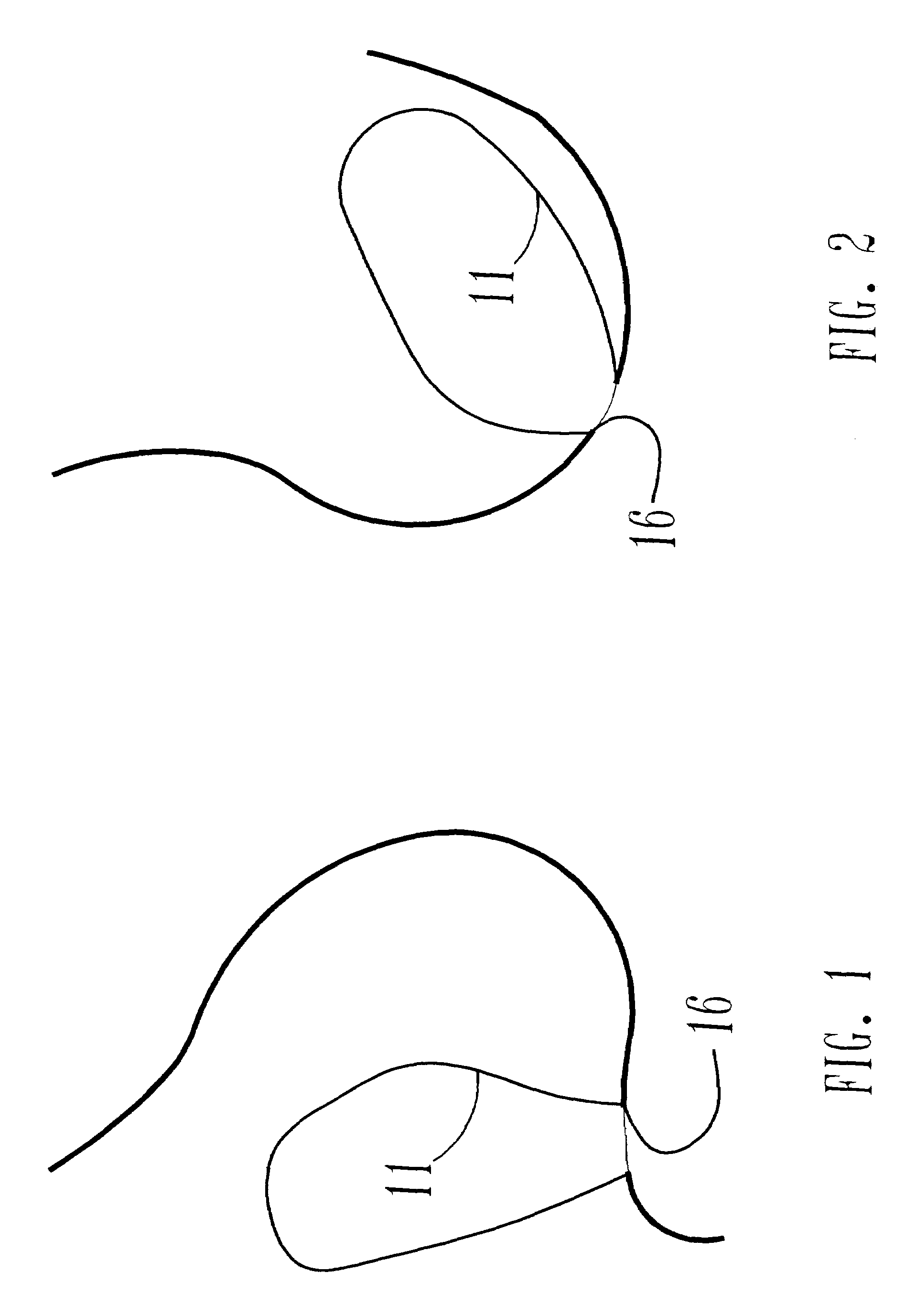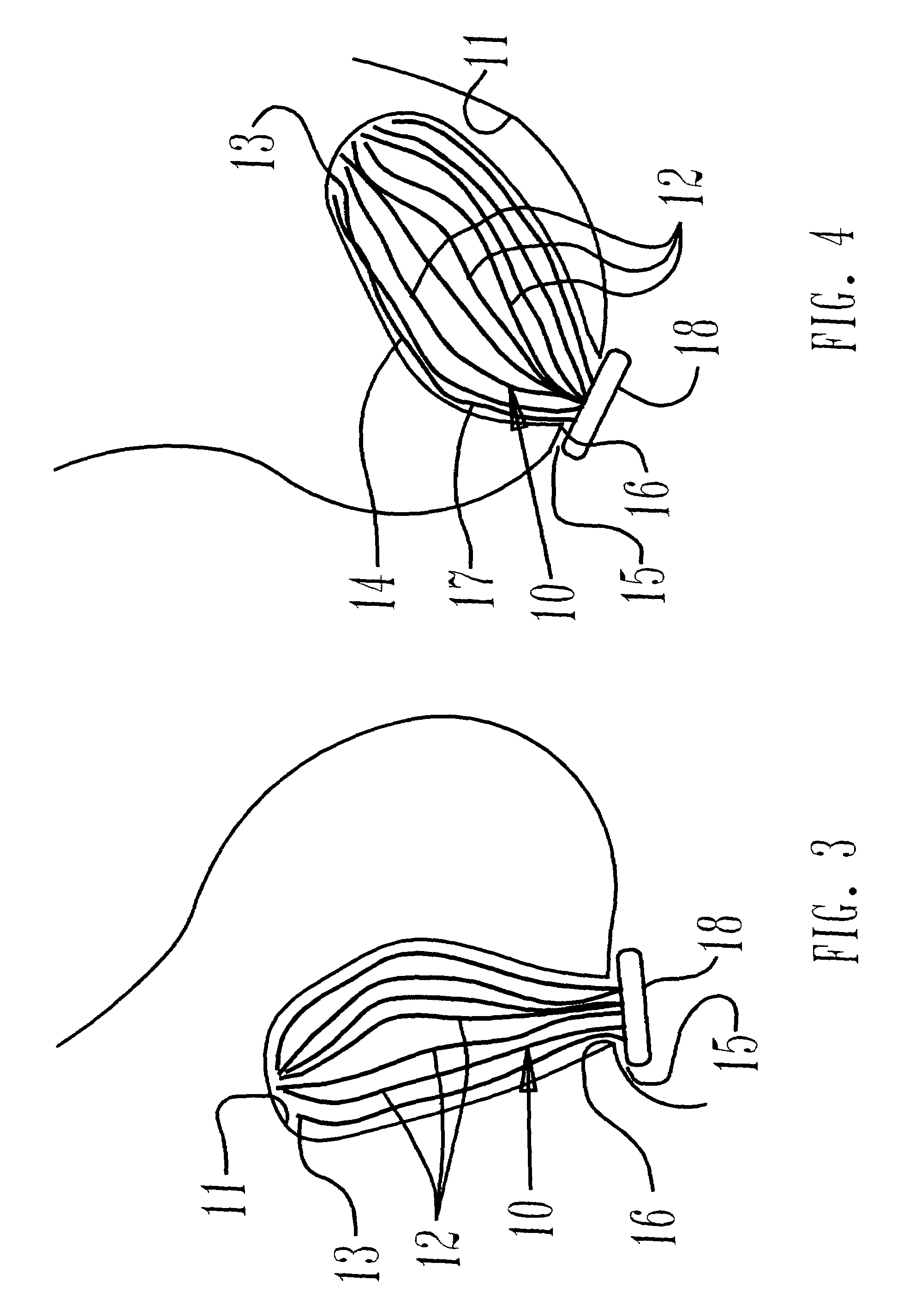Apparatus and method for drainage
a technology of apparatus and drainage, applied in the direction of wound drainage, suction drainage container, catheter, etc., can solve the problems of preventing infection and promoting healing, tubular surgical drains are prone to blockage and other forms of obstruction, and the passage of discharge may be blocked or obstructed, so as to minimize the restriction of flow
- Summary
- Abstract
- Description
- Claims
- Application Information
AI Technical Summary
Benefits of technology
Problems solved by technology
Method used
Image
Examples
Embodiment Construction
[0039]An apparatus for drainage 10 of a wound or surgical site 11 accommodates a wound or surgical site 11 anatomically, passes from inside the wound or surgical site 11 percutaneously and extends externally for accumulation of fluids, see FIGS. 1 to 4. The apparatus for drainage 10 has a plurality of fibers 12 and each is elongate and has an internal end 13, middle 14 and an external end 15. It is desired that each elongate fiber 12 be of a thickness about 0.5 to 2 mm and a length perhaps 4 to 8 cm so its thickness is substantially less than its length for flexibility. Preferably each fiber 12 is medical grade suture material e.g., Nylon and is long enough to extend from inside the wound or surgical site 11 through a wound or surgical opening 16 to the external accumulation of the surgical fluids, as depicted in FIGS. 3 and 4. The plurality of fibers 12 form a loose bundle 17 having gathered together external ends 15 and with internal ends 13 unrestrained for spreading divergently ...
PUM
 Login to View More
Login to View More Abstract
Description
Claims
Application Information
 Login to View More
Login to View More - R&D
- Intellectual Property
- Life Sciences
- Materials
- Tech Scout
- Unparalleled Data Quality
- Higher Quality Content
- 60% Fewer Hallucinations
Browse by: Latest US Patents, China's latest patents, Technical Efficacy Thesaurus, Application Domain, Technology Topic, Popular Technical Reports.
© 2025 PatSnap. All rights reserved.Legal|Privacy policy|Modern Slavery Act Transparency Statement|Sitemap|About US| Contact US: help@patsnap.com



